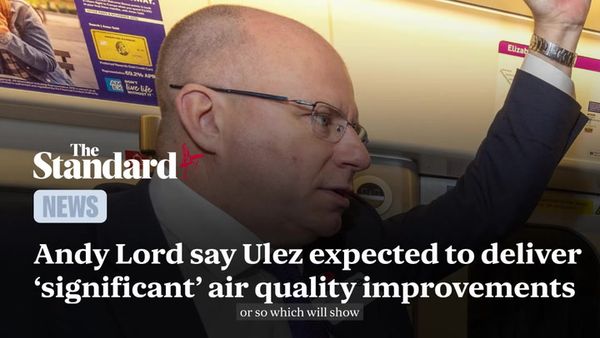
By Luke Hallard
International diversification can be an important factor when managing a balanced investment portfolio. If one country or geographic region experiences a downturn, investments in other countries may help to offset losses. There are several key considerations when selecting an international investment, including political stability, exchange rate risk, inflation risk, maturity of the market, and access to information — but in this article, I’d like to specifically explore the mechanics of when and how to buy an American Depositary Receipt (ADR) or a Global Depositary Receipt (GDR).
It should also be noted that today many brokers support direct investment on international exchanges, providing investors with a potentially wider inventory of available equities. These overseas investments will be settled in the local currency of the international market, trading hours will differ, and there may be tax implications for capital gains and dividends, but otherwise, this can be a very straightforward way of adding international diversification to your investment portfolio.
If your broker does not support the international exchange you wish to purchase from, or if you simply prefer to see stock quotes in your home currency during regular trading hours, then it may be preferable to purchase a depositary receipt.
What is a Depositary Receipt?
A Depositary Receipt is a certificate issued by a financial institution that represents ownership of shares in a foreign company. Depositary Receipts trade on local stock exchanges just like any other domestic investment, providing investors with the ability to buy and sell shares of foreign companies without having to go through the process of setting up a special brokerage account.
Depositary Receipts are beneficial in multiple ways — they offer investors a means of purchasing stock in overseas companies that may not otherwise be available; foreign firms also benefit, as Depositary Receipts enable them to attract international investors and capital without the complexity and expense of listing on a foreign stock exchange directly.
The most typical form of depositary receipt is the American Depositary Receipt – ADRs trade on US exchanges and are available to retail investors.
Do you want your portfolio to outperform the market? Our lead advisors uncover the top 7 opportunities in the stock market each month for our members. Click here to try 7investing for $1.
A Depositary Receipt listed in a non-US market, most commonly the London Stock Exchange or Luxembourg Stock Exchange, is a Global Depositary Receipt (GDR) (although a special form of “Rule 144A” GDR also trades in the US over-the-counter market). Some retail brokers provide access to GDRs at higher minimum order sizes, however, these listings are more typically offered to institutional investors. You might also see the term European Depositary Receipt (EDR) or Continental Depositary Receipts (CDR) – these are just GDRs under a different name.
The London Stock Exchange operates a dedicated Depositary Receipt service called the International Order Book (IOB). The IOB offers institutional investors cost-efficient, secure and transparent access to invest in some of the world’s fastest-growing markets, including Central and Eastern Europe, Asia, Africa, and the Middle East. Although the IOB was previously dominated by Russian-listed companies, many of these listings were suspended in the first quarter of 2022 as a consequence of sanctions imposed on Russian investments.
GDRs and ADRs have many similarities, but the remainder of this article will focus on ADRs given their greater suitability for retail investors.
To bring the topic of ADRs to life using an example, with a market capitalization of nearly $175 billion, Shell Plc SHEL is the largest company currently listed on the London Stock Exchange. Shell’s primary listing is in the UK, however, it also has secondary listings on the Euronext Amsterdam exchange as AMS: SHELL, and on the New York Stock Exchange as NYSE: SHEL. Shell’s US listing is via an American Depositary Receipt.
Are All ADRs the Same?
Not all ADRs are created equal. There are different types of ADR, each with slightly different features. A single company also may have multiple ADR listings, making it important for a retail investor to understand the specific nature of the instrument they are buying, and whether there are any pros and cons to selecting a particular version of the listing.
When a company establishes an ADR program, there are three different programs, or facilities, from which it can choose. The ‘level’ of the ADR primarily differs in terms of its listing exposure and reporting requirements.
- Level 1 is the lowest level of ADR. Under a Level 1 program, the company is exempt from full Securities and Exchange Commission (SEC) reporting requirements and must simply publish its annual report in English on its website in the form required by its home country. Because of the minimal oversight and exemption from reporting requirements, Level 1 ADRs are only traded on the ‘over-the-counter’ (OTC) market.
- Level 2 ADRs can be listed on a US stock exchange such as the NYSE or NASDAQ, but shares must be registered with the SEC, and the company is required to file an annual report that conforms to US generally accepted accounting principles (GAAP) standards. The company must also meet the exchange's listing requirements.
- Level 3 is the highest level of ADR program and requires the company to meet strict reporting rules that are similar to those followed by domestically listed US companies. With a Level 3 program, companies can issue shares to raise capital rather than just listing existing shares on a US exchange. Many of the largest companies with ADR programs are Level 3.
Level 1 to 3 ADRs are ‘sponsored’ ADRs, but in some cases, a US bank or broker may create an ADR without the involvement (or even the consent) of the company that issued the underlying stock! Similar to Level 1 sponsored ADRs, unsponsored ADRs always trade on the over-the-counter market.
Several banks provide listings of all active ADRs, but the most consistently useful resource I’ve found personally is the Deutsche Bank ADR Directory. Consulting this for Shell plc, we can see that this is a Level 3 sponsored ADR.
One final piece of information that is worth noting is the ratio of the ADR to the underlying stock. The most common ratio is 1:1 where each ADR represents one common share of the company, however, the depositary bank will set the ratio of US ADRs per home-country share at a value that they feel will appeal to investors. In the example provided, Shell’s ratio is 2:1, which explains the majority of the price discrepancy between the London listing at GBP23.15 and the NYSE listing at USD52.99.
Is the Over-the-Counter Market Safe?
The OTC market is a dealer-driven market, which means that prices are set by dealers who carry inventories of securities to facilitate trading, rather than through the auction process that takes place on the major exchanges.
There are actually three different OTC markets:
- The Best Market (OTCQX) — this OTC market includes well-established, reputable companies that meet high financial standards and other stringent reporting requirements.
- The Venture Market (OTCQB) — the venture market is for young companies that are still developing and growing. The eligibility requirements for this market are more lenient than for the best market.
- The Pink Market (OTC Pink) — commonly referred to as the pink sheets (because information was initially printed on pink paper), the pink market is by far the riskiest of the OTC markets. Companies traded in the pink market provide the least amount of information and do not meet the reporting requirements set by the SEC. This category is home to most penny stocks, shell companies, and companies that are in some sort of financial distress. As a result of the less-stringent criteria and lack of quality control, these securities may be subject to fraud and may pose significant risks to investors.
All three OTC markets are operated by OTC Link, an electronic inter-dealer quotation and trading system developed by OTC Markets Group.
It would be easy to assume that the pink market is to be avoided, however, this is actually where the US listings for many large foreign companies are to be found. A foreign company that meets the listing requirements in its home country may still list its ADR in the pink market if it does not wish to also meet the filing and listing requirements of a major US exchange or other OTC market. Household names such as Nissan Motor Company NSANY and the energy company E.ON AG EONGY are examples of quality companies that are listed on the pink sheets.
Although investing in stocks listed on any OTC market could be considered safe if sufficient due diligence is undertaken, there are several risks associated with OTC trading that an investor should be aware of:
- Higher costs — the bid-offer spread on an OTC investment is generally much wider than on an exchange-listed security.
- Lack of price transparency — theoretically a dealer could charge buyers different prices for the same security.
- Low liquidity — many OTC stocks are thinly traded, meaning there isn't much demand. This can make them hard to sell when you want to.
- Volatility — since OTC securities experience lower trading volumes, they may experience sharp price swings.
- Lack of oversight — OTC trading may have less regulation than major exchanges, depending on the market you choose to trade through.
So Which ADR Should I Buy?
With more than 2,000 ADRs representing companies located in more than 70 countries, an investor needs to undertake additional due diligence when selecting an international investment for their portfolio.
Of course, it is of primary importance to assess the financial strength and prospects of the underlying company you plan to invest in. Many of the 200+ active 7investing stock recommendations are internationally listed companies, and by selecting from this smaller universe of quality companies you can be assured that the investment has been subject to expert analysis that fully considers the possible risks and potential return. 7investing also provides ongoing coverage of all active recommendations, so we’ll be the first to inform you if there is a thesis impacting development, or if we believe a recommendation is no longer worthy of your investing dollars.
In addition to undertaking due diligence on the underlying company, an investor should also carefully consider the quality of the ADR listing itself.
As a rule of thumb, where there are multiple ADR listings for the same company, a sponsored listing should be preferred over an unsponsored listing. If only unsponsored OTC listings are available, the version of the ADR that is the most heavily traded should typically be preferred, as this will have higher liquidity.
As the bid-offer spread and the volatility of an investment in an ADR can be sizeable, to control your exposure to rapid stock price movements, where permitted it would be advisable to use a limit order rather than an ‘at best’ or ‘at the market’ order.
What Else Do I Need to be Aware Of?
You should carefully review the applicable fees and taxes when making any international investment.
Some ADRs are subject to periodic service fees, also known as pass-through fees or custody fees, which can add to your investment costs. Information on any such fees should be available in the ADR prospectus, but typically these are between 1 and 3 cents per share. This service fee may be deducted directly from the dividend if the company pays one, or it may appear as a separate fee on your brokerage statement.
A key benefit of holding an ADR rather than a direct investment on an international exchange is that your broker will collect any dividend payments and convert them into US dollars for you. However, not all brokers support auto-reinvestment of dividends for ADRs, and this should be researched if it is an important factor in how you manage your portfolio.
Depending on the country of the underlying company and the tax status of your account type, dividend withholding tax on ADRs may be lower than those applied to a direct investment on an international exchange. Usually, your broker will automatically withhold the necessary amount to cover expenses and foreign taxes. Since this is the practice, American investors may need to seek a foreign tax credit from the IRS or a refund from the foreign government's tax authority to avoid double taxation on any gains realized. This is particularly relevant if the foreign country does not maintain a tax treaty with the US.
While a rare occurrence, the underlying company or the bank offering the ADR may decide to terminate the ADR program for any number of reasons, including a lack of interest from investors. This could result in a requirement that the position either be liquidated or converted to the underlying foreign ordinary shares.
The risk of an ADR being delisted should also be considered, particularly for Chinese stocks where political tensions with the US are running high, although recent reports suggest that this risk may be lessening.
The 7investing Long-Term Takeaway
ADRs provide an easy mechanism for US investors to own foreign stocks, improving the diversification of a balanced investment portfolio.
Many leading international companies, particularly those listed in Europe, can be bought domestically in the US for very little difference in price, however, the fees and taxes associated with any international investment should be carefully considered.
Ultimately, the financial strength and prospects of the underlying company you plan to invest in should take overriding priority when making an investment decision. 7investing’s expert analysis can help you identify the best quality investment opportunities in both domestic and international markets.
About the author: Luke Hallard is a professional investor with a focus on technology and innovation, AI, Fintech, and Health-tech, and a lead advisor for 7investing.com. You can read more of his content on Twitter, and can find his top stock market recommendations by joining 7investing.com/subscribe.





